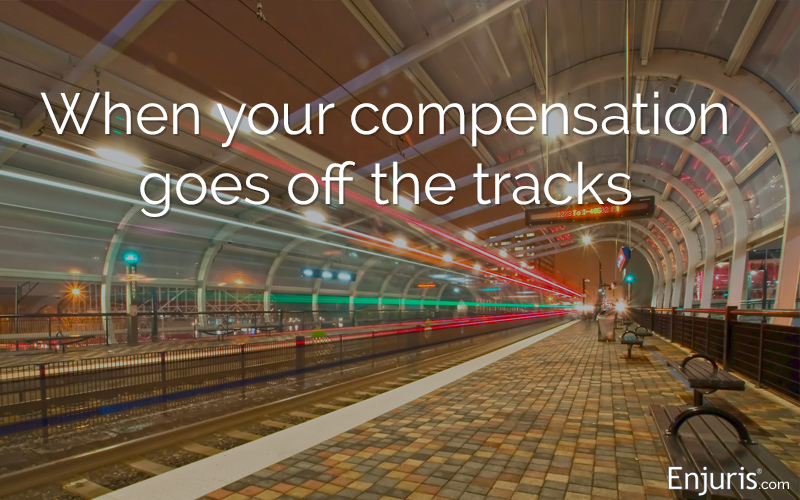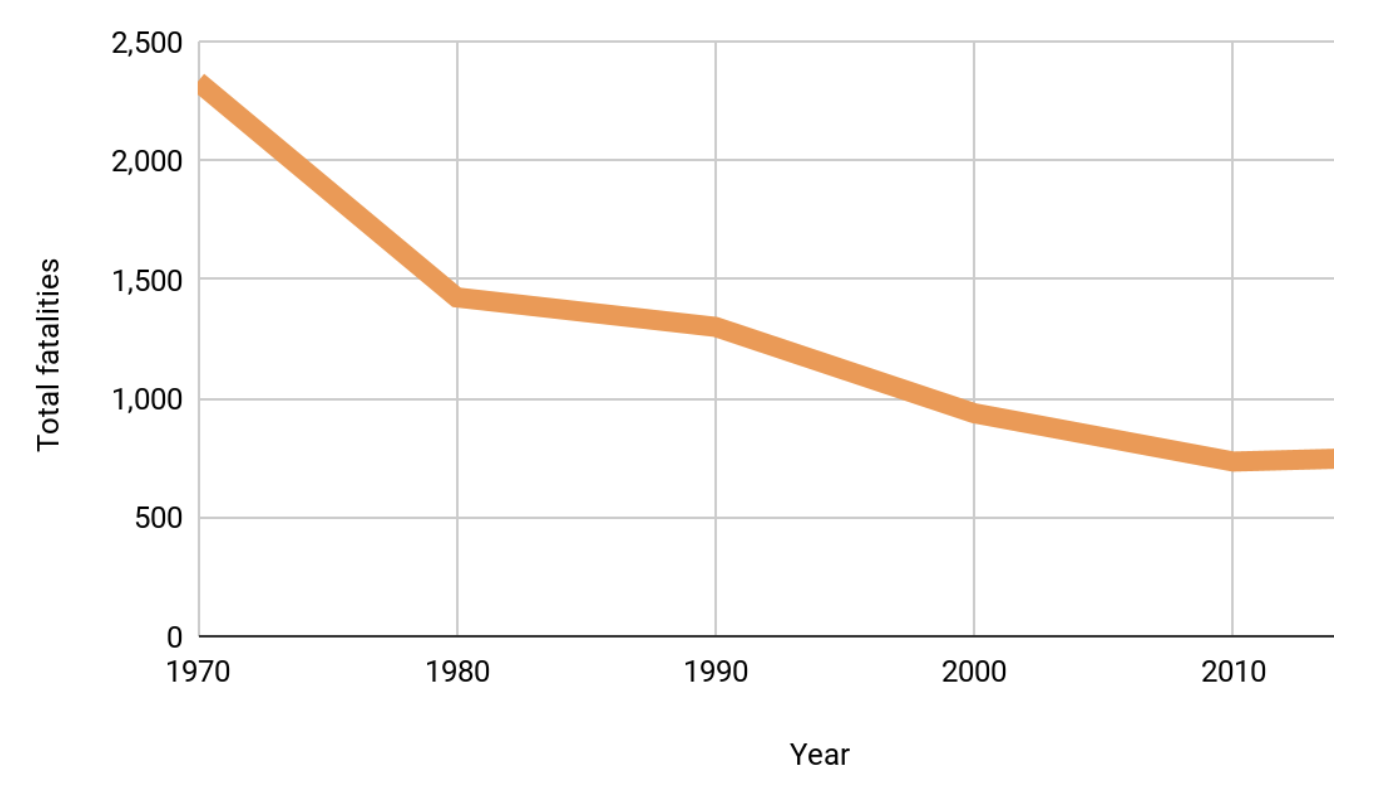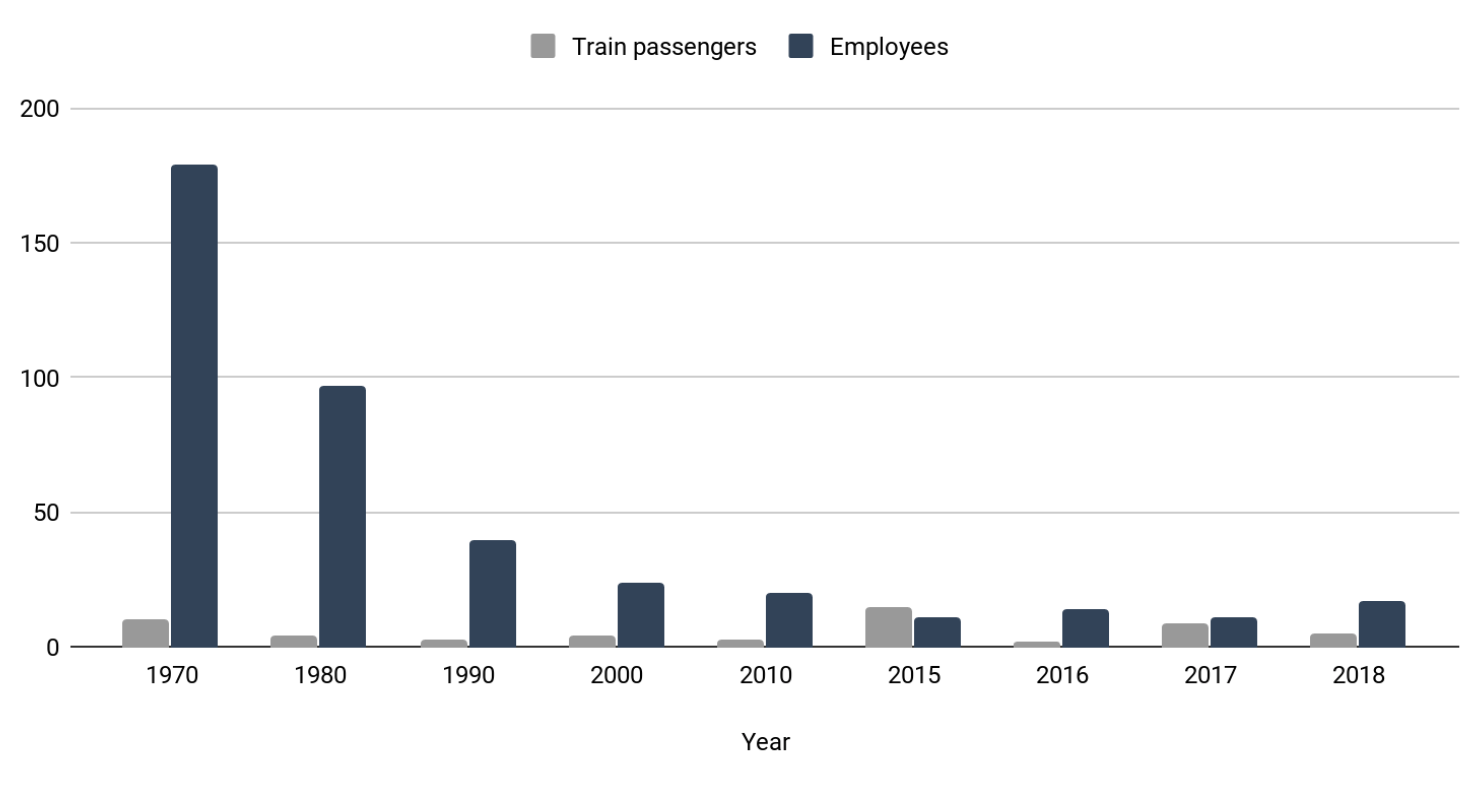Train accidents in the Tarheel State are rare, but they do happen.
Two people were killed when an Amtrak train struck a car at the Saddle Creek Court rail crossing in Harrisburg, North Carolina on October 28, 2019. The individuals who died were inside the car that collided with the train, which was headed for Raleigh at the time. No train passengers were injured.
Less than a month earlier, a man on the tracks in Raleigh was killed when hit by an Amtrak train headed from Miami to New York.
In early 2020, a Honda Accord was crushed by a train after getting stuck on the tracks in Morrisville. In that accident, the driver and 2 passengers were able to escape from the vehicle before the collision and no one was injured.
In December 2019, an 84-year-old woman was killed in Rowan County when her vehicle was struck on the train tracks.
Back in 2015, 55 people were injured when an Amtrak train in North Carolina derailed after a collision with a truck at a grade crossing.
A common theme among these North Carolina train accidents is that they all involved a collision with a person or vehicle on the tracks.
Still, statistics show that train travel is actually quite safe.
Train accident statistics
The chart below illustrates the number of passenger train vehicles, number of miles traveled, and fatalities over the past 50 years nationwide.
| Amtrak | 1970 | 1980 | 1990 | 2000 | 2010 | 2015 | 2016 | 2017 | 2018 |
|---|---|---|---|---|---|---|---|---|---|
| Number of passenger vehicles | |||||||||
| Train-cars | 1,569 | 2,128 | 1,863 | 1,894 | 1,274 | 1,428 | 1,402 | 1,405 | 1,403 |
| Passenger train car-miles (millions) | 213 | 235 | 301 | 368 | 295 | 319 | 316 | 316 | 273 |
| Number of train fatalities | |||||||||
| Fatalities at railroads and grade crossings | 2,331 | 1,424 | 1,300 | 937 | 734 | 749 | 760 | 817 | 830 |
| Passengers on trains | 10 | 4 | 3 | 4 | 3 | 15 | 2 | 9 | 5 |
| Employees on duty | 179 | 97 | 40 | 24 | 20 | 11 | 14 | 11 | 17 |
| Trespassers | 607 | 566 | 700 | 570 | 569 | 578 | 619 | 663 | 696 |
Shown another way, these charts display the overall decrease in fatalities from 1970 to 2018.
Total number of train fatalities in the U.S. (1970-2018)
Number of train accident fatalities among passengers and employees (1970-2018)
Source: Bureau of Transportation Statistics
Train travel in North Carolina
Amtrak is undoubtedly one of the best ways for most Americans to travel long distances via train, either within a state or between states. The North Carolina Department of Transportation partners with Amtrak to provide local routes through parts of the state.
- Piedmont: Raleigh, Cary, Durham, Burlington, Greensboro, High Point, Salisbury, Kannapolis, Charlotte
- Carolinian: Rocky Mount, Wilson, Selma, Raleigh, Cary, Durham, Burlington, Greensboro, High Point, Salisbury, Kannapolis, Charlotte
- Crescent: Gastonia, Charlotte, Kannapolis, Salisbury, High Point, Greensboro
- Silver Star: Rocky Mount, Wilson, Selma, Raleigh, Cary, Southern Pines, Hamlet
- Silver Meteor/Palmetto: Rocky Mount, Wilson, Selma, Fayetteville
There’s also a light rail transit system in the Charlotte area. There are also plans for commuter rail development in Wake and Durham counties.
What causes train accidents?
The 2 most common causes of train accidents are human error and equipment failure.
Human error could be on the part of the train operator, or it could be the fault of a driver or pedestrian trying to cross the tracks. “Train racing” describes when someone tries to cross railroad tracks, on foot or in their car, while a train is approaching. If you’re a train passenger injured because of a collision between the train and a car or truck trying to cross the tracks, that driver would be the liable party.
There can also be the element of human error by the conductor or engineer. This might include negligence, like being distracted by a mobile phone, being under the influence of drugs or alcohol, failure to follow safety protocols, traveling at an unsafe speed, or otherwise not adhering to the rules of the job.
Equipment failure, on the other hand, is caused by a defect and could include:
- Brake failure or malfunction
- Defective rails or improper track maintenance
- Malfunctioning warning lights, sounds, or gates
- Defective hand brakes
- Broken handrails
- Defective communication equipment
Other causes of train injuries and accidents that are more rare, but possible, include:
- Track obstructions
- Poor weather conditions that cause a collision or derailment
- Bridge or tunnel collapses
- Train and railroad explosions
- On-board fires
- Improper cargo loading on freight trains
North Carolina train crash liability and damages
Liability can be complicated, especially if the accident involved a train owned by a municipal authority like the North Carolina Department of Transportation.
The North Carolina Tort Claims Act (NCTCA) allows the state to be sued if an officer, employee, or agent negligently causes harm while acting within the scope of their duties.
In other words, if you were injured in a North Carolina train accident while riding a train owned by a municipal authority, you might be able to sue the North Carolina Department of Transportation just as you would if it were a private entity. If you’re suing an agency of the North Carolina government, you must file your claim within 3 years from the date of the accident for personal injury, and within 2 years for a wrongful death claim.
Or perhaps the liable party is a vehicle driver, train personnel, the train company, the entity that maintains the safety of the tracks and stations, or the manufacturer of certain parts of the train. Your lawyer will conduct discovery and investigate the accident to determine who’s at fault (there could also be more than 1 responsible party).
Whoever is responsible for your injury, you might be able to recover damages intended to compensate you for the costs associated with the accident, including:
- Medical treatment, current and future
- Lost wages from time off of work as a result of the injury, both current and future
- Lost earning capacity if you won’t be able to return to the same job as you had before the accident
- Assistive devices and services if you’re disabled and unable to continue your activities of daily life (for example, house cleaning, child care, or transportation)
- Cost to replace damaged or destroyed property
- Emotional distress, including pain and suffering
- Funeral and burial costs if you’re the surviving family member of a person who died in a train wreck
In North Carolina, non-economic damages (like pain and suffering) are capped at $1 million.
North Carolina is a pure contributory negligence state, which means a plaintiff can’t recover damages if they’re determined to have any liability for their own injury.
In other words, if you’re injured because you were walking on train tracks where you weren’t supposed to, you drove a car over the tracks when lights were flashing, or you could have avoided the accident in any other way (but didn’t), then you might not be able to recover damages.
Injuries to railroad employees
Most people who are injured at work are covered by their employer’s workers’ compensation insurance.
But railroad employees are often an exception.
Most railroad workers in North Carolina and elsewhere are covered under the Federal Employees Liability Act (FELA). An employee covered under FELA doesn’t receive workers’ compensation insurance.
Workers’ compensation is no-fault insurance, which means a worker is covered for any job-related injury regardless of whether someone was at fault. FELA is different because the worker must prove that the railroad company was negligent. Even so, the railroad company might have to pay for the worker’s injuries if the railroad was only partially responsible and the worker was partially responsible.
Train and railroad safety
Many train accidents and injuries are avoidable. In general, train accident statistics involve all injuries — anything from a foot being caught in a door to a fatality on the tracks.
Some basic safety around railroad tracks and while boarding or riding the train can save your life... or at least save you from being hurt.
Whether you’re a pedestrian, driver, or train passenger, here is an important fact to know:
Trains often deviate from set schedules. Even if you’re sure you know what time a train is expected to cross the tracks, always follow safety precautions. Delays happen, routes change, and a train can approach at any time of the day or night.
Also, if you’re near or crossing railroad tracks, remove your headphones or earbuds so you can hear a train approaching in the distance. Visual awareness isn’t enough — use both your sense of sight and hearing to be safe near the tracks.
Train safety for pedestrians
- Only cross at a designated crosswalk. Never walk across train tracks in a place where pedestrians don’t belong. A crosswalk is designated by flashing red lights, a gate, or a crossbuck.
- Train tracks aren’t a recreational space or playground. Don’t use train tracks as a place to walk your dog, ride your bike, or for other activities. That includes hunting, fishing, bungee jumping, biking, or operating an all-terrain vehicle (ATV) from the top or through the opening of a train trestle.
- A train might be unable to stop in less than a mile of track. By the time a locomotive engineer becomes visually aware of a person on the tracks, it’s probably too late to stop the train in time.
- A train can overhang tracks by at least 3 feet in each direction and there can be loose straps that hang from rail cars. If you’re near a train crossing, stand as far back as possible while waiting for the train to pass.
- Don’t cross immediately after the train has passed. It’s possible that a second train is coming from the other direction that was obstructed by the first. You must have a clear view in both directions before crossing.
- Never try to “hop” a train by grabbing the outside of a moving train. This is never safe!
- Obey crossing signals. A flashing red light indicates that a train is approaching. Don’t try to “duck” the gate or go around, and never try to beat the train. Only cross when the lights are no longer flashing.
Train safety for drivers
- Know what to do in an emergency. If your vehicle stalls on the tracks or for any reason can’t cross, get out of the car immediately and run away from the tracks.
- Call 911 if you see a vehicle on train tracks. You can also call the number on the emergency notification sign near the posting. The sign has the crossing number and street location so you can provide precise information to help emergency responders arrive as soon as possible.
- Only cross train tracks if you are sure you can completely clear the crossing without stopping. In other words, if another car has moved through the crossing and is stopped immediately on the other side (because of other cars in front, traffic signals, or for any other reason), wait until there’s enough room for the entire length of your vehicle to completely clear the tracks before starting to cross.
- The appearance of train speed can be deceptive. A train in the distance is probably approaching faster than it looks. A train requires about a mile to stop. By the time the engineer sees a person or vehicle on the tracks, it’s likely too late to stop the train in time to avoid a collision.
- Always listen and look for an approaching train. Today’s train engines are much quieter than they used to be because of advanced technology. Not every train operator will use the horn as a warning when approaching an intersection, either. That’s why you must look both ways every time you’re about to cross or be near the tracks.
Train safety for passengers
- Stand back from the edge of the platform.
- Don’t lean over the track to see if a train is coming. Trains might approach from either direction.
- Never step forward until the train is fully stopped and the doors are open.
- Never step on the tracks. If you drop something, inform a police officer or train station personnel. Never try to retrieve it yourself.
- Always walk (don’t run) on a train platform.
- When boarding or exiting a commuter train with doors that open and close quickly, make sure that anything attached to your body like loose clothes, purses with drawstrings, long hair, bags or a backpack is completely through the doors.
- If you’re traveling with young children, hold their hands and help them on and off the train (reminding them to “mind the gap”). Remember — little legs take small steps. Stepping on or off a train might be easy for you, but could require more coordination and concentration for a little one. You should hold your child and fold a stroller when entering and exiting a commuter train. Don’t push a stroller between closing train doors.
- Hold onto a stationary object (like a seat back or designated handrail) on a moving train car if you’re standing.
Do you need a lawyer?
A North Carolina train accident lawyer can help you recover damages if you’re injured, and they can advise you of all the available legal options. The Enjuris law firm directory is a good start to finding a qualified North Carolina lawyer who’s ready to help you get the full compensation you deserve.
See our guide Choosing a personal injury attorney.




